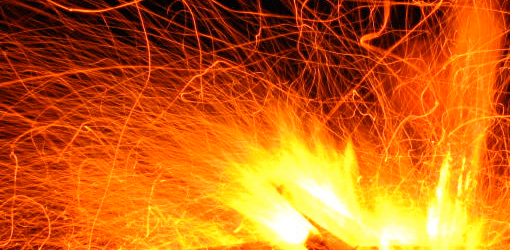Motivating Collaboration
Posted on November 30, 2010 | posted by:The magic of collaboration is evident when the collective output exceeds the individual inputs of a team (buzzword=synergy). A successful collaboration is a measure of the human potential, and a glimpse of what we can achieve when the conditions are right. It is necessary to understand factors that influence successful collaborative work environments to spawn a successful endeavor. Thus, the purpose of this post is to identify a couple factors that amplify successful collaborations.
Purpose is paramount. An individual will truly embrace and celebrate their work when it is fascinating and provocative. This work cultivates intrinsic motivation, fueled by curiosity and intrigue, enjoyment and personal challenge. The opposite is extrinsic motivation, dictated by deadlines, expected evaluation and forces outside the content of the work itself. The two sources of motivation are not entirely opposed, and may coincide to produce synergistic reactions[1]. However, this post will focus on internal forces rather than imposed structures, which leads to the next topic on how successful groups form.
Collaborations must occur naturally, blossoming from a common interest. When intrinsic motivations overlap, a powerful reinforcing feedback loop is created that exponentially increases the motivation between individuals. Their combined curiosity swells and rapidly multiplies through engaging conversations and later brainstorms. The collaboration is fortified and emboldened by the collective interest in the subject matter. It also serves as a central point from which everyone can explore tangents and externalities, returning to a location where these ideas can percolate and buzz within a collective environment.
In a recent project to re-envision the TransDesign studio space, I collaborated with two fellow students to research the effects of studio spaces on creativity. Intrinsic motivators drove our research interests, which led to in-depth inquiries into separate aspects of the studio space such as light, sound, and creative surroundings. We each pursued an independent tangent that contributed to a holistic view of the studio space. This strategy was especially successful because it provided individual autonomy within a collaborative group, enabling each of us to capture the energy and inspiration from our personal intrinsic motivations. The end result was a cohesive vision that promoted the curiosity of its individual contributors.
It is essential to understand why individuals are attracted to ideas, and how their interests propel the cognitive work that results from overlapping intrinsic motivations. Powerful levels of creativity ignite when work or research transcends labor and is driven by passion and curiosity. This environment is fertile due to the commonalities shared by everyone involved, and the drive to understand and tackle problems from various angles that draw on prior experience and motivations. The result is identifying the right answer, the most appropriate endeavor, and the feeling that it must be done.
In the spirit of collaboration, please feel free to influence this post, or future topics on collaboration, cooperation, participation, and co-creation. Let’s make a game of it!
[1] Amabile, Teresa M. “Motivating Creativity in Organizations: On Doing What You Love And Loving What You Do.” California Management Review; Fall 1997; 40, 1; ABI?INFORM Global



